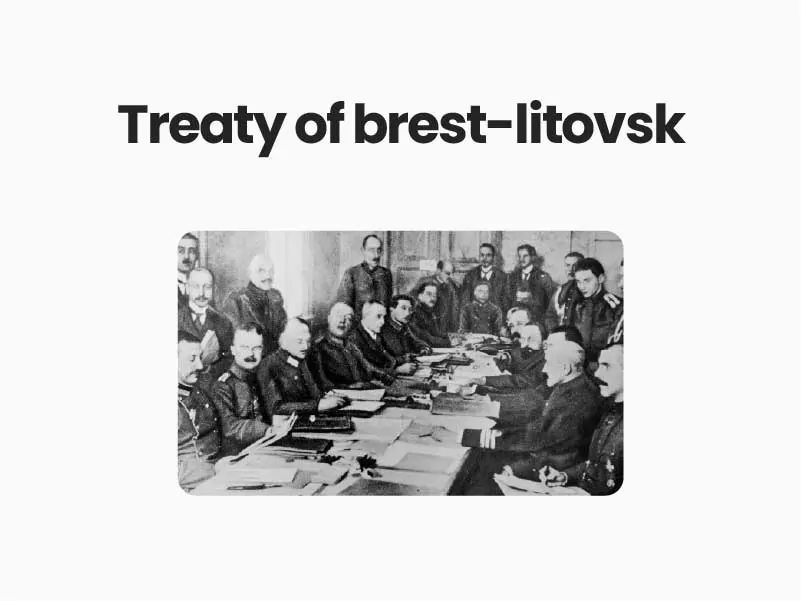Companion@360 → 7 Month programme to sharpen your writing skills → REGISTER NOW

Treaty of brest-litovsk
Treaties of Brest-Litovsk, peace treaties signed at Brest-Litovsk (now in Belarus) by the Central Powers with the Ukrainian Republic (Feb. 9, 1918) and with Soviet Russia (March 3, 1918), which concluded hostilities between those countries during World War I.
Out Break of the Civil War:
The February Revolution broke out in early March 1917 (or February, according to the Julian calendar, which the Russians used at the time); Nicholas abdicated later that month.
After Lenin’s return from exile (aided by the Germans) in mid-April, he and his fellow Bolsheviks worked quickly to seize power from the provisional government, led by Alexander Kerensky, Russia’s minister of war. In early November, aided by the Russian military, they were successful. One of Lenin’s first actions as leader was to call a halt to Russian participation in the war.
- An armistice was reached in early December 1917 and a formal cease-fire was declared December 15, but determining the terms of peace between Russia and the Central Powers proved to be far more complicated.
- Negotiations began at Brest-Litovsk on December 22. Leading their respective delegations were foreign ministers Leon Trotsky (1879-1940) of Russia, Richard von Kuhlmann of Germany and Count Ottokar Czernin of Austria.
- In mid-February, the talks broke down when an angry Trotsky deemed the Central Powers’ terms too harsh and their demands for territory unacceptable.
- Fighting resumed briefly on the Eastern Front, but the German armies advanced quickly, and both Lenin and Trotsky soon realized that Russia, in its weakened state, would be forced to give in to the enemy terms.
- Negotiations resumed later that month and the final treaty was signed on March 3, 1918.
- By the terms of the Treaty of Brest-Litovsk, Russia recognized the independence of Ukraine, Georgia and Finland; gave up Poland and the Baltic states of Lithuania, Latvia and Estonia to Germany and Austria-Hungary; and ceded Kars, Ardahan and Batum to Turkey.
- The total losses constituted some 1 million square miles of Russia’s former territory; a third of its population or around 55 million people; a majority of its coal, oil and iron stores; and much of its industry.
- Lenin bitterly called the settlement “that abyss of defeat, dismemberment, enslavement and humiliation.”

